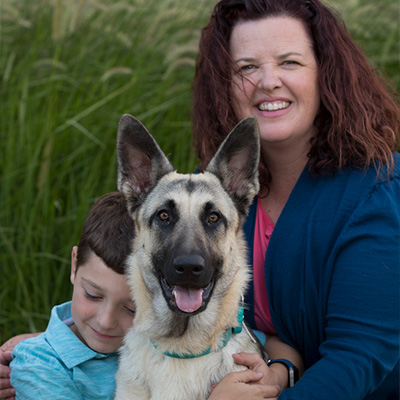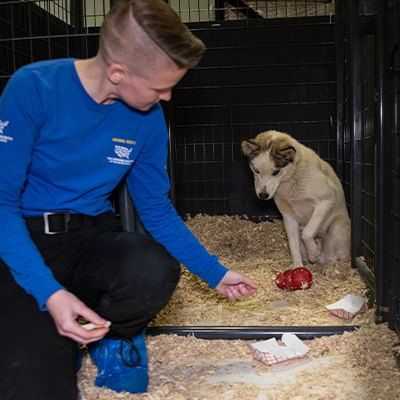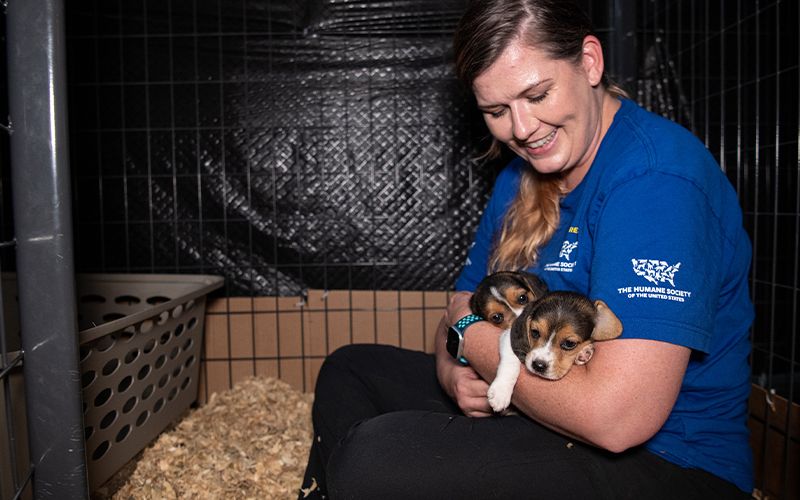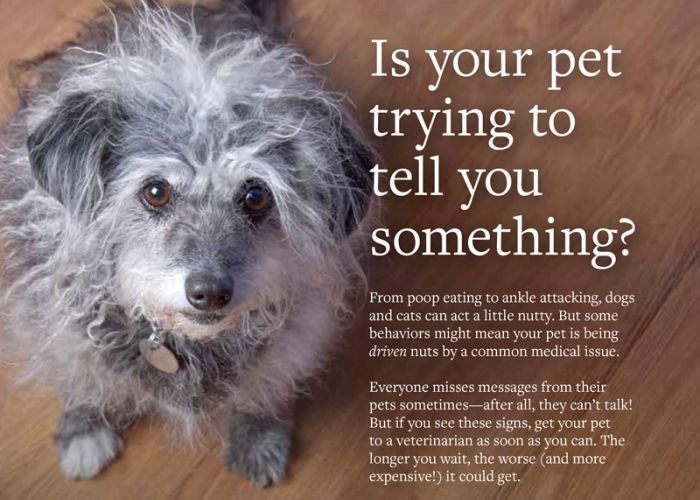Ask the expert: Treating trauma
How these Humane World and Maddie’s Fund experts practice the trauma-informed philosophy and save dogs’ lives

Shelter and rescue folks know that traumatized dogs are more likely to excessively bark, show fearfulness on walks, react in an extreme way to noises, and display food and toy possessiveness and attention-seeking behavior. In the past, dogs exhibiting these behaviors might have difficulty finding homes, or even be euthanized.
These days, experts know that by recognizing and addressing the trauma and fear animals may bring to shelters—from their genes, stress in the womb, early separation from mothers or a stressful environment, such as a dog meat farm, a puppy mill or an abuse situation—we can save their lives.
In this edited Q&A, Audra Houghton of Humane World, director of operations for the Animal Rescue Team, and Dr. Sheila Segurson, director of research for Maddie’s Fund, talk about the trauma-informed philosophy and the fear-free approach, which puts that philosophy into practice—enabling shelter staff to treat traumatized animals in a way that eventually frees them from a constant state of fight or flight. (To learn more, check out the downloadable materials available from their presentation at Animal Care Expo in April.)
We are taught to believe that repetition is what animals need to learn, but something that’s scary doesn’t need repetition for them to learn from it—if you touch a hot stove, you don’t need to do it again.

How would you describe the trauma-informed approach?
Segurson: It’s really a foundation of thinking, recognizing that these animals have experienced something. The impact of trauma is unpredictable. An animal with a traumatized past might have a much more exaggerated response to stimuli. For example, there was a dog from a dogfighting situation who’d been kept in a dark basement. I don’t know what they did to him with water, but every time he got exposed to water, he ran away and hid. It’s putting the pieces together and helping the animal feel safe.
Houghton: We know something happened, but we don’t necessarily need to know what it was. It’s looking at the individual rather than the herd and evaluating how that dog is coping in the environment. We don’t know how any of them will respond even if we know that they came to us having experienced trauma. Some of these dogs want nothing to do with people. [With Korean dog meat farm rescues], sometimes it’s almost like we’re working with captive wild animals. They don’t want to be touched, so we don’t touch them. All of us have that desire to comfort the animal, but we observe carefully and ask ourselves what this particular dog wants. What is he asking us to do or not do, based on his body language and response to our presence? It can be a long road to build enough trust to share space and have physical contact with them, and until that occurs, it’s important that we don’t push them over threshold and put them in a position that may cause them to react defensively. They are communicating with us and it’s on us to listen.
What can traumatize a dog?
Segurson: The dog meat trade is an extreme example. A hoarding case is an extreme example. For many, many dogs, just going into a shelter is a traumatic event. For a dog who has never lived in a home, a home is traumatizing. It’s really easy to further traumatize these dogs. You have to go from what a dog is used to, to gradually expose the dog to something different.
Houghton: We’re usually anxious about things we don’t know about, and dogs are the same. They’re generally terrified in the shelter environment. They don’t know what to expect. They don’t know anyone. They’re experiencing strange smells. Many of these animals don’t have the capacity to put their trust in us right away. [If we are not careful], they start to associate interactions with people with pain or fear, simply because we are performing normal care activities like giving vaccinations, trimming nails, or cleaning their kennel.
You worked with a dog named River at the Animal Rescue Team’s care and rehabilitation center who had been rescued from a dog meat farm in South Korea. He had a deformity that caused his feet to collapse and flatten out. How did you use the trauma-informed philosophy and fear-free approach to help him when you were trying to teach him how to walk on a leash?
Houghton: We recognized he would reach a certain point where he was done, and he would become emotionally aroused. We were timing it down to the second—it was just under five minutes, and he would start to react. Outwardly, you might assume that he was “acting up,” pulling on the leash, jumping on his handler, and becoming very mouthy and frustrated, but we were concerned that perhaps his deformity was causing him pain. It did not appear to be painful on his initial exam, and he was able to walk normally and did not limp, but when we recognized the pattern and brought our veterinary behaviorist in, she recommended further diagnostics and agreed that it looked like he was reaching a limit where he became painful or was anticipating pain. He just needed us to slow down, address his medical issues, and listen when he was telling us there was a problem. We limited the time on a leash and put him on anti-inflammatories, which made him much more comfortable, and in a matter of weeks he was like a new dog. Just a few short years ago, there’s a good chance he would have been euthanized because he was about 100lbs, and his behavior was creating a risk for his caregivers.

How does this differ from what was done before?
Houghton: The past approach was, “A temporary discomfort to the animal is worth it, if the end result is that they are adopted.” [But] sometimes that momentary discomfort is not worth it. We’re used to, “This dog must have a bath,” or, “He has to have his nails trimmed.” We now say, "It’s important that he feels safe and builds bonds with people” and “His emotional wellbeing just as important as his physical wellbeing.” We are taught to believe that repetition is what animals need to learn, but something that’s scary doesn’t need repetition for them to learn from it—if you touch a hot stove, you don’t need to do it again.
Rather than saying, “I need to do this to you,” [we are] asking, “What do you need from us?” We try to listen to what the animals are telling us and recognize that what we’re doing, even if it seems like an innocuous activity, could be terrifying and traumatic for them. We have a five-second rule when we are handling for exams or treatment. If we absolutely must handle them for treatment, such as in cases of animal cruelty where we need to collect evidence and complete their exams, if they struggle we will try for no more than 5 seconds to calm them before we pause.,. If we try again and are still seeing high levels of fear or stress we try again later or try a sedated exam. They’re always trying to communicate with us. If you don’t listen to their communication, they feel that they have no other option but to bite, and that interaction can have lasting consequences to their overall behavioral and emotional health.

How do you know when you’ve succeeded?
Houghton: When I started [in the field], I thought, “Dogs bark. Sometimes they’re happy or excited, that’s normal.” [But] barking is communication. They’re telling us something when they’re barking, so we should investigate that and try to identify what the issue is. Sometimes silence is also communication, and we take the same approach. We ask “What does their body language tell us?” and we react accordingly. So to identify when our approach is successful, we’re looking for relaxed body language, interest in normal activities like food-based enrichment and toys, interaction with other dogs or with people, and deep, restful sleep. Among many factors, we know we are on the right path if they begin to show curiosity and interest in others and when they sleep comfortably.






